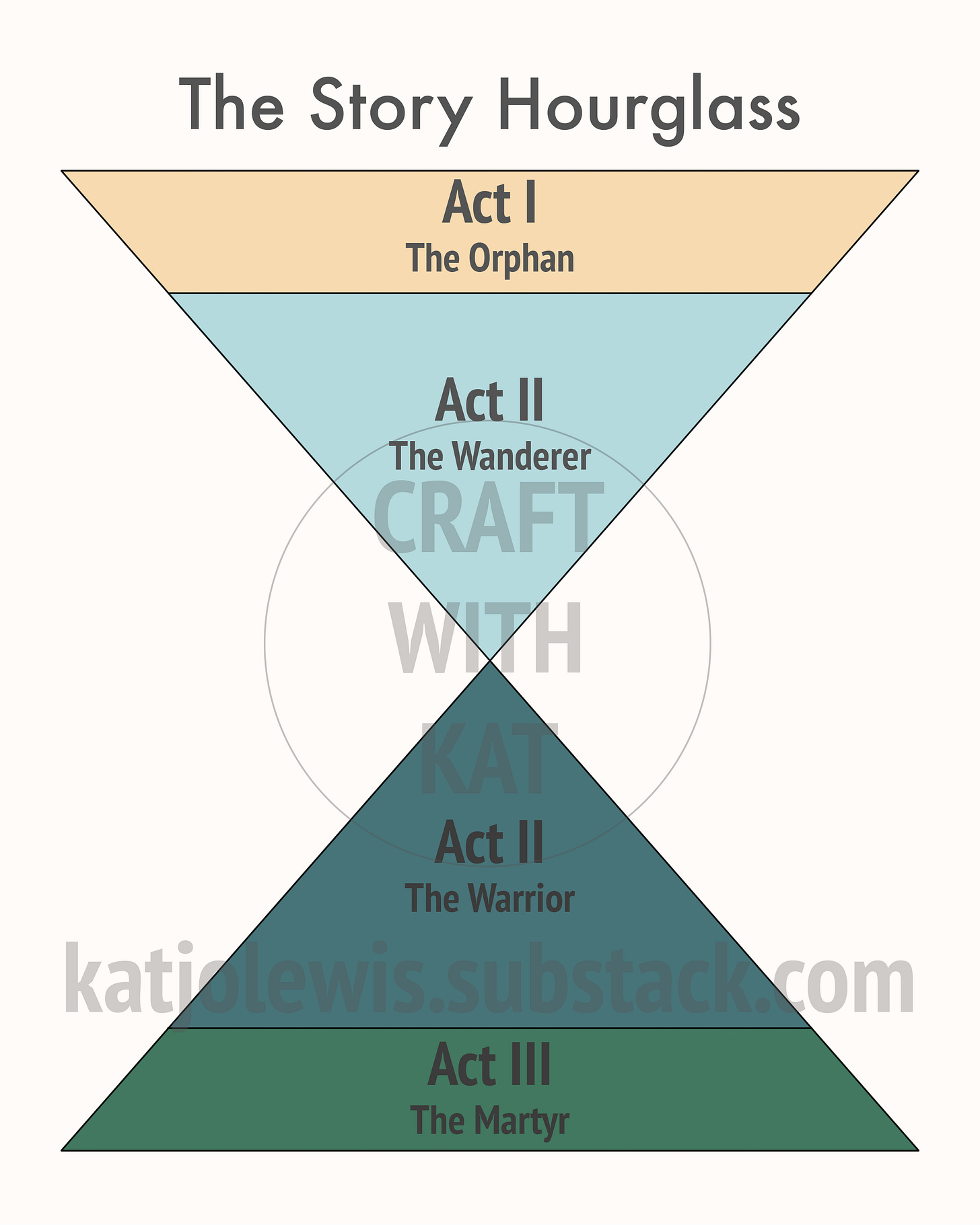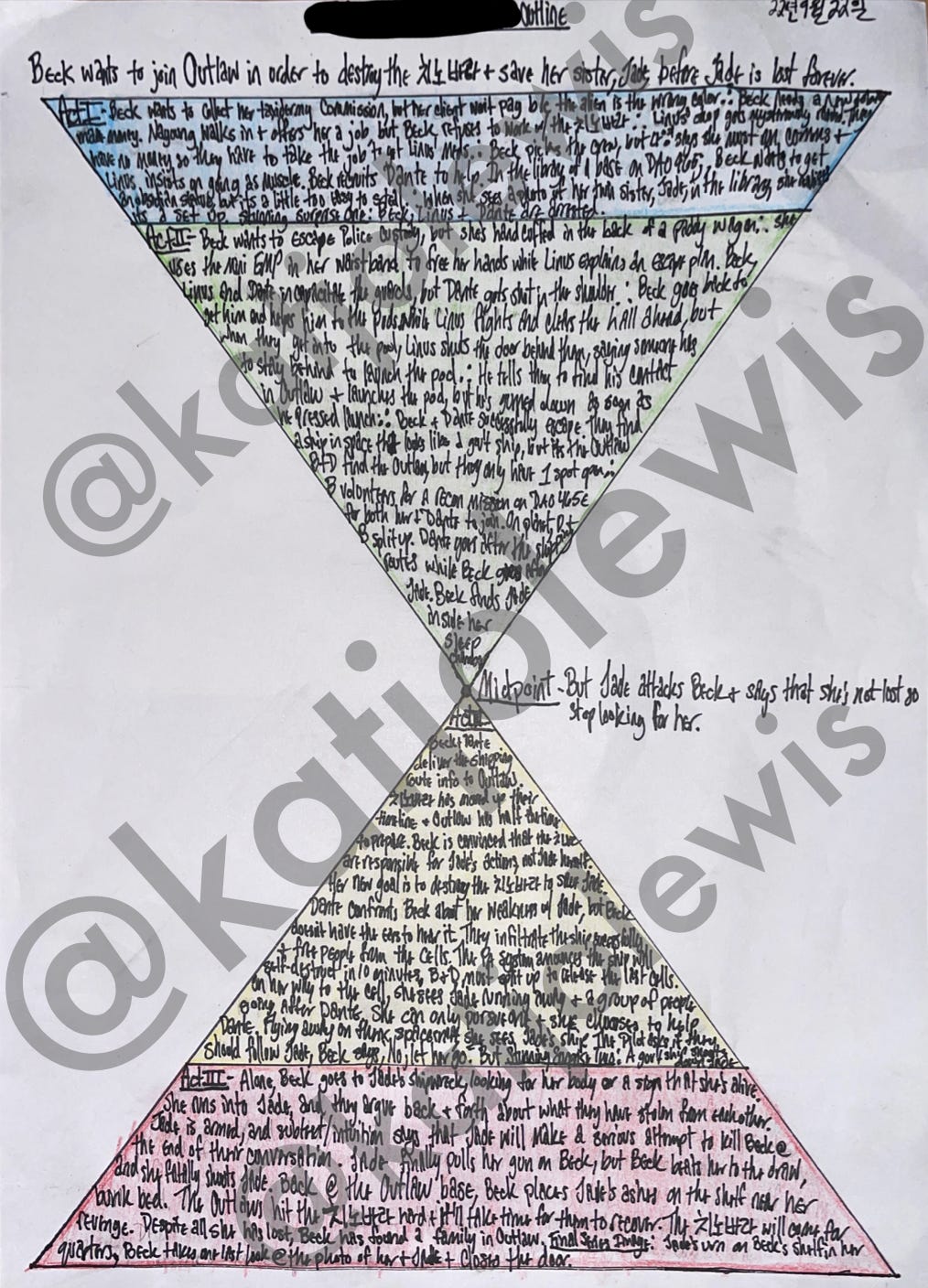Learning Objective: By the end of this post, you will know how to use the Story Hourglass diagram to summarize the cause and effect of your story.
In our last lesson, we discussed the three pitch materials that a writer needs to create in order to sell their novel to a traditional publisher. Today, we’re delving deeper into methods for writing a synopsis. To get the most out of this lesson, I recommend reading last month’s lesson if you haven’t already.
In general, a synopsis is a sales tool that serves two purposes:
It summarizes the plot
It summarizes the story
I find it most helpful to think of plot and story in terms of questions. Plot answers this question: what happens in the novel?
With last month’s 15-Beat Synopsis exercise, we learned how to answer this question by summarizing our novel’s events in five double-spaced pages.
Story, on the other hand, answers a more complex question: why does what happen matter?
On her YouTube channel, Abbie Emmons says this about story:
Story is not about what happens. It’s about how what happens affects and transforms the characters.
This transformation ultimately explains why what happens matters because the character must transform in order to literally or metaphorically survive the story. As a whole, a character’s transformation comes from the story’s cause and effect. For this reason, strong synopses concisely lay out the events of a story in terms of their cause and effect. The Story Hourglass exercise will help you reshape your 15-Beat Synopsis from a summary of plot to a summary of story.
As always, you know what to do: take what’s useful and leave what’s not.
Why Use The Story Hourglass

To create our Story Hourglass, we will be thinking in terms of the most basic, sentence-level story structure.
_________, but _________; therefore, _________.
Here’s an example of how this structure demonstrates cause and effect to create consequences in a story.
I want to go to the store, but it’s raining; therefore, I must get my umbrella. I go to the umbrella stand by the front door, but my mother and sister are arguing in the foyer about the missing pumpkin pie. I ate the pie, but I don’t want to get in trouble; therefore, I try to sneak past them to the umbrella stand. The floor creaks beneath my feet, but I jump behind the dining room doorway before they see me; therefore, they follow the sound. I want to sneak around the other way, but the dog wakes up and blocks my path; therefore, my mom comes around the corner, sees me, and says, “Hey, do you know what happened to the pie?”
To get the most out of this exercise, I recommend using the following constraint whenever possible:
[Character] wants _________, but _________ [is in the way]; therefore, they do _________.
Example
In My Year of Rest and Relaxation, the unnamed protagonist wants to sleep for 24 hours a day, but her circadian rhythm is in the way; therefore, she cons various psychiatrists into prescribing the perfect cocktail of drugs that will keep her asleep.
Ideally, every sentence in your Story Hourglass follows the structure above. Remember, the goal for this exercise is not to create your final synopsis. The goal is to outline the cause and effect of your story. In our next lesson, we’ll explore how to create the final synopsis that you will use as a pitch document for your novel.
All that said, you should write comfortably. Hold this constraint loosely. I recommend using this sentence structure at the start of each act. I also recommend returning to this sentence structure whenever you find yourself stuck or losing the story’s thread.
How to Use the Story Hourglass
The Story Hourglass has six main components:
Keep reading with a 7-day free trial
Subscribe to Craft with Kat to keep reading this post and get 7 days of free access to the full post archives.




